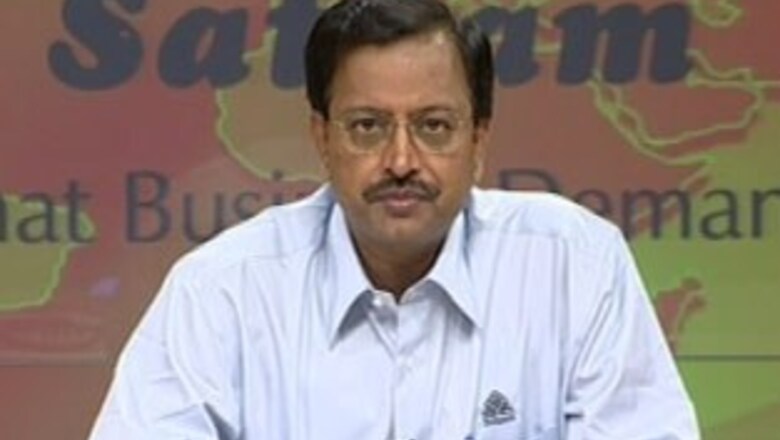
views
Does anyone believe that Satyam Computer Services, India's fourth largest software outsourcing company, was only trying to de-risk its core business by making unrelated acquisitions? If not, just what was the trigger for Satyam to make this week's controversial move and what was the hurry?
Two days after the company announced a deal to spend $1.6 billion to buy out two firms owned by the family of founder Ramalinga Raju and a day after it withdrew the proposal, these questions continue to fox the minds of investors and observers alike.
But a scrutiny of the prospects of information technology sector and Satyam's own competitive position reveals that the global recession may cause short-term pain to the outsourcing sector, but in the long-term, the model will continue to remain valid. In other words, a lot of growth is still left in software if a company is willing to work at it.
"This was a serious error in judgment. It’s a bad dream," Satyam's chief financial officer Srinivas Vadlamani told Network18, hours after the company yielded to investor outcry and buried its plans to buy Maytas Infra and Maytas Properties. "We knew there would be some resistance but never expected the reaction to be so strong. We are trying to control the damage and we want to move on.”
A senior Satyam executive, who spoke on the condition of anonymity, asserted that the slowdown in the demand for IT services prompted the company to look for high-growth areas. At 20 percent, the company's operating profit margins aren't the best in the industry and the executive said it might go down by 4 or 5 percentage points this year.
Several industry veterans said Satyam may be facing the heat of the global meltdown which has swallowed some of its marquee clients such as Lehman Brothers, Bear Stearns and Merrill Lynch (which, together, contribute 10 percent of Satyam's revenue). Now, the automobile sector, which contributes about 3 percent of Satyam's revenue, is also facing an uncertain future. “I would say Satyam was plain unlucky that some of it clients were going down," said Phaneesh Murthy, CEO of iGate Corp. "This isn’t a problem with the company’s strategy, these are blue chip clients. It was just plain bad luck.”
In a report dated December 17, CLSA analysts Bhavtosh Vajpayee and Nimish Joshi said they expected Satyam to perform the worst among the top four IT vendors. They forecast a 2-3 percentage-point decline in dollar revenues for 2009-10 and a 14-15 point drop in earnings per share.
Their pessimism is matched only by that of the company itself. Vadlamani said the growth rate in IT industry, which was hovering about 30-40 percent a few years ago, is expected to fall to 10 percent next year. And that's why, Vadlamani says, Satyam looked at infrastructure as a good alternative.
Just listen to two statements that Vadlamani has made within a gap of two months: On October 17, discussing the company's results, the Satyam CFO had said: "While we anticipate some near-term difficulty as we move ahead, we are confident that our approach will enable Satyam to continue to thrive long into the future."
By December 16, his views had changed: "On the IT side, we are talking of flat growth rates and we don't know when it is going to recover. Over the years, the business model of IT has grown that much more riskier. Ninety-five to ninety-six percent revenues come from exports. So, we are dependent on developed economies. We have cross currency headwinds and various other things."
LOOKING TO THE FUTURE
The immediate outlook for India's $40-billion software export industry has indeed turned gloomy, though Satyam's peers do not see any threat to the fundamentals of the IT outsourcing model.
The National Association of Software and Services Companies (Nasscom) has already lowered its growth estimate for the sector twice and is considering another revision. “For the first time in 10 years, we could see volumes declining sequentially this quarter.” says a Merrill Lynch report dated December 11, 2008.
PAGE_BREAK
According to the CEO of an IT company, a recent offshore deal from a large investment bank in the US was struck at a fee as low as $15 per hour, about half of the average rate paid to Indian firms. Companies have cut down hiring on campuses and are finding ways to cut costs. No one knows how long the downturn will last and how deep will be its effects.
But there are ways to ride out the storm and emerge stronger, industry players say.
A senior executive who spent two decades at one of India’s largest IT companies said, “You cannot control growth, but you can control costs. There are several levers that a company can push.” Increasing staff utilization, shifting more work offshore and even lay-offs are some of the options.
"We believe the model is strong," said Subhash Dhar, senior vice-president and a member of the executive council at Infosys Technologies. He says that the total outsourcing market is about $800 billion and at $40-60 billion, the Indian industry is just scratching the surface. IBM’s global services business is bigger than the entire Indian exports. Most of the work being done from India is application development and maintenance; we are yet to build scale in new revenue streams. “The model is maturing, but the market has not peaked,” Dhar said.
According to Phaneesh Murthy, only 16 percent of the IT and operations budget of Fortune 500 companies is being outsourced to low-cost destinations and there is scope to take this to at least 25 percent. “There is still a lot of juice left in the engine. In the short term, things will be bad but the macro environment for outsourcing remains strong.”
Clearly, companies will have to work much harder if they wish to continue earning the same profits as before. That includes telling clients that Indian companies cannot just help in cutting costs but also adding value – a difficult journey that most large companies have embarked upon and which calls for investment in new capabilities like consulting, building intellectual property and hiring a diverse workforce.
It is also not clear if Satyam tried to do all this before deciding to take a big leap into real estate and infrastructure.
At one point during an analyst call after announcing the deal, Ram Mynampati, board member and president of Satyam's commercial and healthcare businesses, said that the acquisition provided the company with an opportunity to extend engineering services, enterprise related services and BPO opportunities to new sectors like infrastructure. It is a theory that does not have any takers. Murthy's take; “If you have to acquire domain expertise, then you can easily buy an IT company for a few million dollars which understands this space”.
So, will Satyam's faux pas hurt the company? Will financial investors now stay away from Indian IT industry? Many don't think so. “We will remain investors in the company because at these prices it is attractively priced," said Adrian Lim, investment manager at Aberdeen Asset Management Company, one of largest stockholders of Satyam. “I don’t think the operational reputation of the company has suffered. Satyam’s business may have margin challenges and foreign exchange challenges but one needs to invest the cash in the company to improve performance. What has suffered is the reputation of the promoters,” he said.
Some analysts said Satyam's founder Ramalinga Raju may have felt that his company might not be able to do well in an increasingly tougher outsourcing market. “We don’t know why they took the move. One reason could be a loss of his confidence in his company,” a Mumbai-based analyst said.
Mitu Jayashankar is Associate Editor at the new business magazine to be launched by Network18 in alliance with Forbes. Deputy Editor Shishir Prasad and Principal Correspondent Ramnath Subbaraman contributed to the report.




















Comments
0 comment